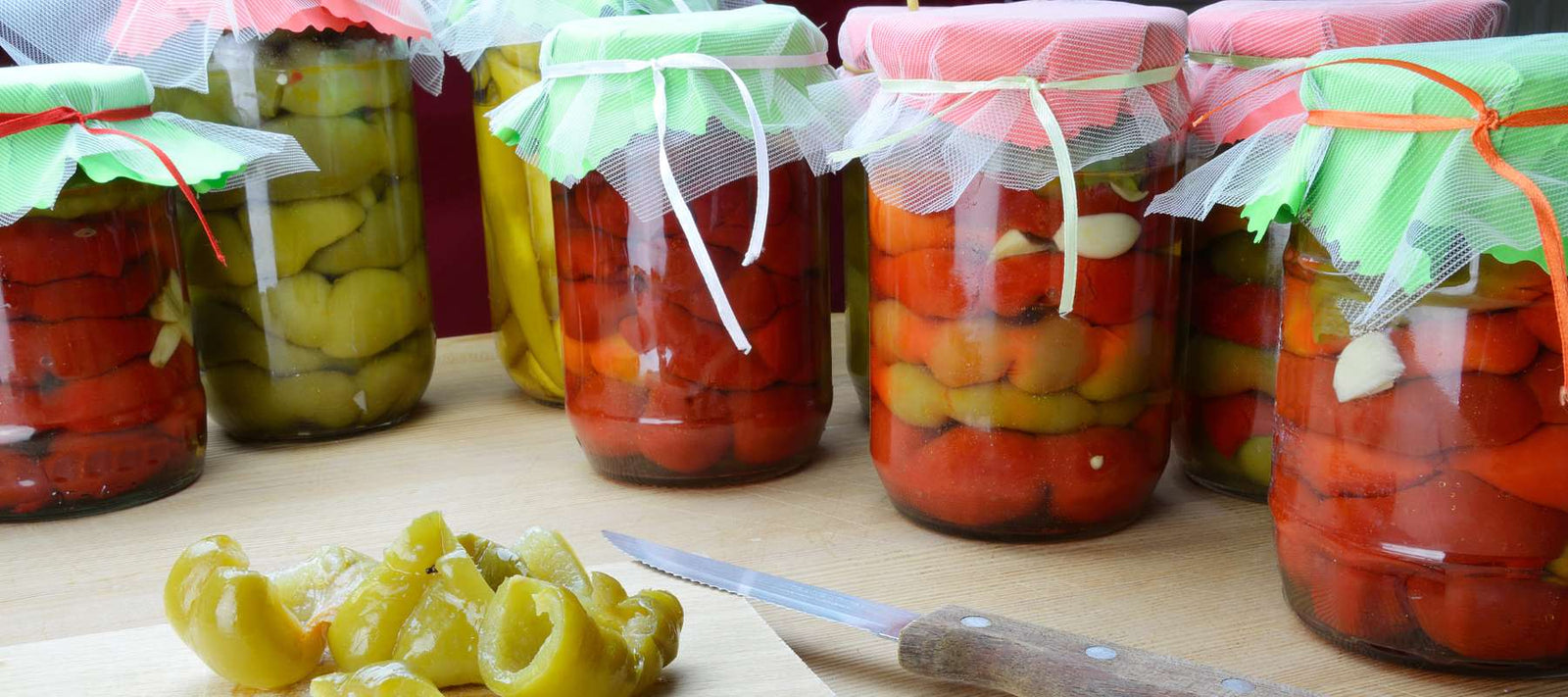If you're staring at a mountain of freshly harvested peppers from your garden, congratulations! Whether you have a lot of sweet peppers, hot peppers, or a combination, count your blessings and try not to get overwhelmed by all of that bounty. It’s not necessary to eat them all immediately, and you don’t have to pickle them all either. There are so many different ways to preserve their yummy flavor and goodness for the months ahead that will add variety to your food stores. Let’s look at some of our favorite options for preserving peppers.
Cowboy Candy: Our Favorite

Drying Peppers
One of the more traditional methods of preserving peppers is drying, which is a great option to preserve and even concentrate the flavors of your peppers. In fact, you probably already use dried peppers in your cooking. For example, chipotle peppers are smoked and dried jalapenos, and ancho chiles are dried poblanos. Ground (or crushed) red pepper often refers to dried cayenne peppers (but can also include other red chile peppers).
To dry your peppers, prepare them in advance, slicing them and removing the stems if desired before arranging them on a baking sheet. You can then place them in an oven set at the lowest temperature or use a dedicated food dehydrator until they become brittle. Once dried, you can crush them, grind them into powder, or store them whole, depending on your intended use.
Peppers In Vinegar

When most people think of preserving peppers, they probably think of pickled peppers. Pickling in vinegar is easy, and there are so many delicious recipes out there to choose from. Pickled peppers are processed in a brine mixture that includes vinegar, water, salt, and possibly other seasonings. The peppers are packed tightly into sterilized jars and covered with hot brine before sealing. The jars must be processed in a boiling water bath to ensure safe long-term storage. Always follow proper canning procedures, like acidity levels and processing times, for safety.
Lacto-Fermentation
For those focused on maximizing health benefits, lacto-fermentation is a method that is gut-friendly with probiotics. It involves using naturally occurring beneficial bacteria to preserve the peppers, much like making sauerkraut. Lacto-fermentation is fairly straightforward: Clean your peppers and containers thoroughly before starting. Slice your peppers and pack them into the clean jar. Cover the peppers with a saltwater brine and seal the jar. It’s important that the peppers are fully submerged in the saltwater for safety reasons. Let the jar remain at room temperature for one to two weeks until the solution begins to bubble. At that point, you’ll probably want to move your peppers to the refrigerator to slow the fermentation process down. There are also special containers that are designed especially for lacto-fermentation that allow gasses to escape while keeping the jar sealed.
Freeze Drying
If you have access to a freeze dryer, you can achieve excellent long-term storage results that are not only exceptionally tasty but also retain more vitamins and minerals than other methods do. This is a great option for preserving bell peppers’ nutrition which easily degrades when exposed to heat.
Storing Peppers in Oil

Here’s another time-honored and flavorful short-term preservation strategy that can be used for both sweet and hot peppers, especially roasted red peppers. Make sure you follow strict guidelines for food safety when storing peppers in oil to prevent the risk of botulism. This method includes roasting your peppers, often with onions or garlic. Afterward, the peppers are skinned and completely covered with a high-quality oil (usually olive) in sterilized jars, along with any herbs. Make sure that the vegetables are fully submerged for safety, topping off the oil as needed. Store in the fridge for up to a month.
If you’re covered up in peppers right now, don’t stress out. There are so many easy and tasty options for preserving your bounty for the future. From the sweet and savory kick of Cowboy Candy to the health-boosting properties of lacto-fermented peppers, each method has its own benefits and adds something unique to the kitchen table. When it’s the coldest part of winter, you’ll be glad you took the time to preserve your peppers for later.
























